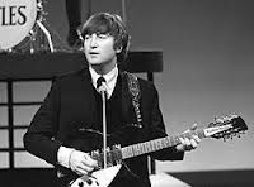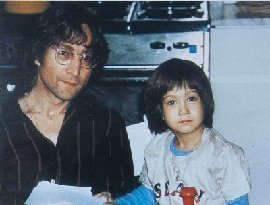The cowboy hat is a high-crowned, wide-brimmed hat best known as the defining piece of attire for the North American cowboy. Today it is worn by many people, and is particularly associated with ranch workers in the western and southern United States, western Canada and northern Mexico, with many country, regional Mexican and sertanejo music performers, and with participants in the North American rodeo circuit. It is recognized around the world as part of Old West apparel.
The cowboy hat as known today has many antecedents to its design, including Mexican hats such as the sombrero, the various designs of wide-brimmed hat worn by farmers and stock men in the eastern United States, as well as the designs used by the United States Cavalry.
The first western model was the open-crowned "Boss of the Plains", and after that came the front-creased Carlsbad, destined to become "the" cowboy style. The high-crowned, wide-brimmed, soft-felt western hats that followed are intimately associated with the cowboy image.
The concept of a broad-brimmed hat with a high crown worn by a rider on horseback can be seen as far back as the Mongolian horsemen of the 13th century. The hat has a tall crown that provides insulation, and a wide brim that provides shade. Hot and sunny climates inspire designs with very wide brims such as the sombrero of Mexico.
It is not clear when the cowboy hat received its name. However, European-Americans in the Western United States originally had no standard head wear. People moving West wore many styles of hat, including top hats, bowlers, Civil War headgear such as cavalry and slouch hats, and sailor hats. Contrary to popular belief, it was the bowler and not the cowboy hat that was the most popular in the American West, prompting Lucius Beebe to call it "the hat that won the West". The working cowboy wore wide-brimmed and high-crowned hats. The hats were most likely adopted from civil war era slouch hats and may have been influenced by the Mexican Vaqueros before the invention of the modern design. John Batterson Stetson is credited for originating the modern day American Cowboy Hat.
The original "Boss of the Plains", manufactured by Stetson in 1865, was flat-brimmed, had a straight sided crown, with rounded corners. These light-weight, waterproof hats were natural in color, with four-inch crowns and brims. A plain hatband was fitted to adjust head size. The sweatband bore Stetson's name. While only making one style of hat, they came in different qualities ranging from one-grade material at five dollars apiece to pure beaver felt hats for thirty dollars each. J.B. Stetson was the first to market the "Boss of the Plains" to cowboys, and it has remained the universal image of the American West. The charisma of the West was carried back East when adventurers returned in the expensive "Boss of the plains" style hat. In the 19th century and first half of the 20th century, a hat was an indispensable item in every man's wardrobe. Stetson focused on expensive, high-quality hats that represented a real investment for the working cowboy and a statement of success for the city
The durability and water-resistance of the original Stetson obtained additional publicity in 1912, when the battleship USS Maine was raised from Havana harbor, where it had sunk in 1898. A Stetson hat was found in the wreck, which had been submerged in seawater for 14 years. The hat had been exposed to ooze, mud, and plant growth. However, the hat was cleaned off, and appeared to be undamaged.
Modern cowboy hats are made of fur-based felt, straw or, less often, leather. They are sold with a tall, rounded crown and a wide flat brim. They have a simple sweat band on the inside to stabilize the fit of the head, and usually a small decorative hat band on the outside of the crown. Hats are customized by creasing the crown and rolling the brim. Hats are also sold pre-creased and pre-rolled. Often a more decorative hat band is added. In some places, "stampede strings" or "wind strings" are also attached. Hats can be manufactured in virtually any color, but are most often seen in shades of beige, brown and black. Beginning in the 1940s, pastel colors were introduced, seen often on hats worn by movie cowboys and rodeo riders. "Today's cowboy hat has remained basically unchanged in construction and design since the first one was created in 1865 by J.B. Stetson."
Read about J.B. Stetson, go here:
https://en.wikipedia.org/wiki/John_B._Stetson
Ole! This Skillet Sombrero Pie is so yum that it'll have the fiesta started in no time! Full of corn, tomatoes, cheese, and crunchy corn chips, this pie is finger-lickin', tummy-rubbin' good!
- 1 pound ground beef
- 1 (10-ounce) package frozen whole kernel corn, thawed
- 1 (14.5-ounce) can diced tomatoes with green pepper, celery, and onions, undrained
- 1 (8-ounce) can tomato sauce
- 1 (1-1/4 ounce) envelope taco seasoning mix
- 1 cup (4 ounces) shredded Cheddar cheese
- 1 (10-1/2-ounce) package corn chips
- Brown ground round in a large skillet, stirring until it crumbles and is no longer pink. Drain in a colander, discarding drippings.
- Return meat to skillet. Add corn and next 3 ingredients; bring to a boil. Reduce heat; simmer, uncovered, 20 minutes, stirring occasionally.
- Sprinkle with cheese; cook until cheese melts. Arrange chips around edge. Serve immediately.
Clergy Appreciation Day on the second Sunday in October reminds us to recognize the work of ministers, pastors, and priests in the United States. This national day also falls in National Clergy Month, which is observed each October.
Many congregations take up a special offering on this day to bless their pastors. Others use the entire month of October to find different means to bless the leaders with meals, gifts, and even paid vacations. As an individual, there are several ways to show your clergy appreciation.
- Tell others – Tell them how much your church leader does for the congregation – and let your pastor overhear you.
- Volunteer – churches offer more opportunities for volunteering than just about anywhere. Don’t wait to be voluntold.
- Pray for your clergy – It should probably be in the first slot, but it seemed so obvious.
- Write a note – Thank your minister for being an excellent leader, for his or her compassion, or even something specific.
- Ask – Find out where you can help. Some clergy don’t delegate enough or (see volunteer) so few people volunteer, they’ve taken all the burdens upon themselves.
Join your congregation in celebrating your clergy. Recognize them for their leadership, compassion, stewardship, and faith.
HOW TO OBSERVE CLERGY APPRECIATION DAY
Thank your clergy for the work they do. Being a pastor or other clergy member has its good days, and bad. Yet all leaders need to be recognized for their work and efforts.
Be sure you also personally thank them for all they do to help you and your family!
CLERGY APPRECIATION DAY HISTORY
Hallmark Cards first started Clergy Appreciation National Day of Honor in 1992. The day later changed to Clergy Appreciation Day and is sometimes referred to as Pastor Appreciation Day.




















No comments:
Post a Comment